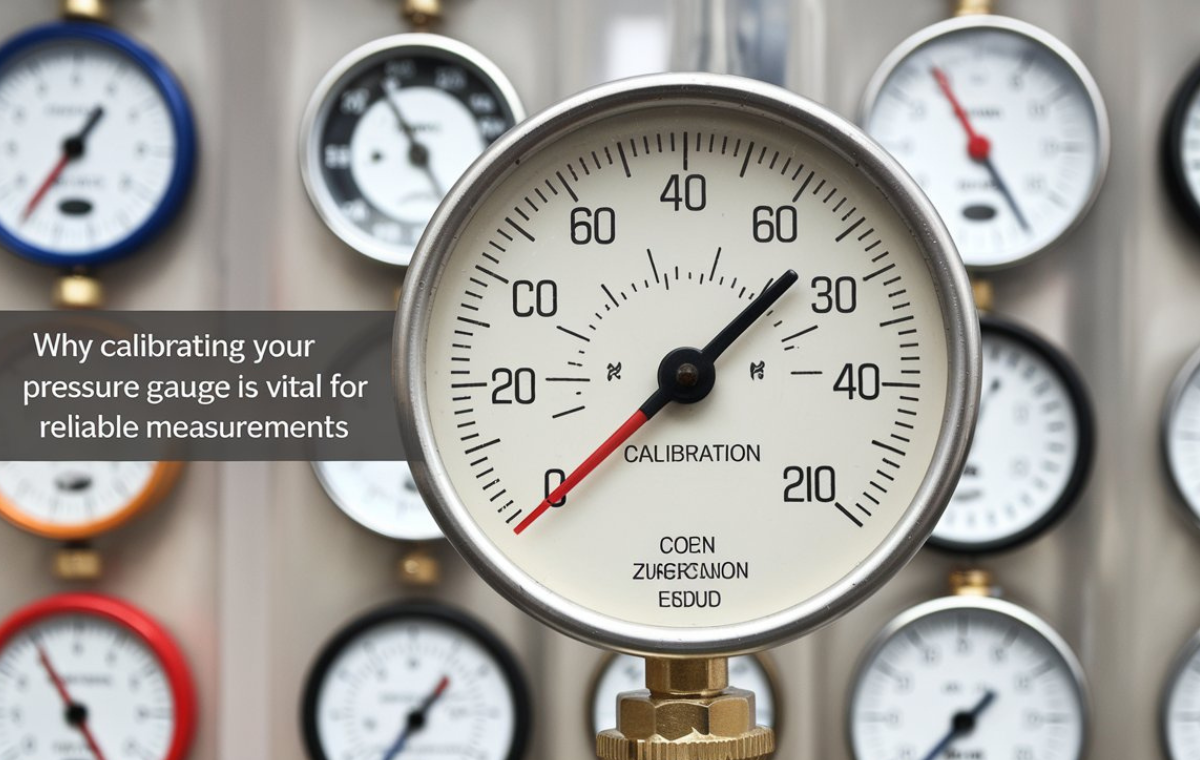Accurate pressure management equipment plays an integral role in many industries. It includes manufacturing, oil & gas, beverage, medical, and pharmaceuticals. If you’re new to any, you need to know under what pressure these key processes must be sustained.
Pressure measurement is one of the most critical parameters. It ensures safety, operational control, and efficiency. But, accomplishing this necessitates periodic changes in the instruments in use.
What is Pressure Calibration?
Before any measuring device is used, it must be calibrated over some time. At times, devices may degrade and no longer meet the specified tolerance set by the manufacturer.
Pressure calibration means a comparison of the pressure output of the DUT against the pressure standard. It is often in a ratio of a single pressure range. The calibration processes follow both national and international standards. It is based on the measurement category and application of the particular equipment.
Why is it Necessary?
Calibration helps to control the measure that is used to check those pressure gauges. It gives correct readings and abides by standards. This is not mere routine rubbing. It’s a precaution against allowing the sights to gain a progressive tendency of inaccuracy that can be disastrous.
Key Benefits of Calibration:
-
- Accurate Measurements
- Enhanced operational safety
- Protection of Industry Standards
- Improved Process Efficiency
- Ensured Quality Control
- Extended Instrument Lifespan
Industrial Procedures for Pressure Gauge Calibration
-
- Primary and Secondary Standards: Primary standards are the most precise and are generally traceable. The secondary standards are also accurate. Although they are calibrated compared to the primary standards.
- Dead Weight Testers: Deadweight testers give unmatched, highly accurate pressure gauge calibration figures. Using a mass applied to a piston of a given area, they produce nominal pressure for standardisation.
- Automated Calibration Systems: Modern calibration programmes utilise computerised pressure controllers and software tools. This calibration report is created either by printing, archival, or even prognostication. It is the next calibration muster according to historical data.
Factors to Bear in Mind to Get the Best Pressure Gauge Calibration
The precision and reliability of pressure gauge calibration need many factors to consider:
-
- Gauge Type: Of course, it is important to change the calibration process depending on the usage of the pressure gauge.
- Calibration Standards: By having an application of accurate and verifiable yardsticks for comparison, you need to meet the standards.
- Environmental Conditions: All these factors, including temperature, humidity, and changes in atmospheric pressures, are accounted for.
- Calibration Equipment: Using very accurate and regularly checked ones for calibration with the equipment to be tested.
- Calibration Frequency: Scheduling depends on the gauge and its exposure to different environmental conditions.
- Documentation: Referring to general guidelines and instructions and following the letter laboratory procedures. It is mostly recommended by manufacturers of the different types of kits used in the laboratory.
- Operator Expertise: Taking advantage of the experienced technicians to set the machine in the right calibration.
- Physical Condition of the Gauge: Checking whether there is any form of damage or compromise to the physical structure of the gauge.
Pressure Calibration and Its Importance in Achieving Industry Compliance
Also to operational advantages, pressure calibration is utilised for compliance purposes. Purchasing has increased importance in organisations’ operations. It is ideal for industries such as pharmaceuticals and food & beverage to adhere to safety and quality standards.
Government agencies like the FDA prescribe clear standard methodologies. It is applicable for industries to adhere to, and exact pressure measurement is key to sustaining these set standards. Calibration guarantees that all the instruments are compliant with these strict parameters. It helps to cut non-compliance concerns and protect the consumer’s well-being.
Calibration technology is growing rapidly and has developed various types. Humans are very clever and do their best to improve those methods that are used in industries. Essentially, the incorporation of IoT sensors with automatic systems for calibration has changed.
Such developments encompass possibilities of monitoring the pressure gauges at a distance. One can check if they need operating adjustments and even patterns to predict the exact time. It improves precision and enables businesses of the respective industries to be on the safer side. It ensures timely maintenance and handles productive operational continuity.
Environmental Effects of Calibration
Pressure Gauge calibration also has an environmental burden, such as noise and pollution. Accurate measurements reduce energy leakages and enhance positive use. It should be consistent with sustainable and more sustainable practices worldwide.
Conclusion
Calibration is a basic need in pressure gauge care, so these tools ensure the right pressures. It should have the ability to minimise deviation from accurate pressure readings. It is crucial for promoting operational safety and efficiency.
From pressure gauge manufacturers to conformity to industry standards. Developing tools perform uniformly across processes. So, more focus is placed on the pressure instruments’ accuracy and safety.

